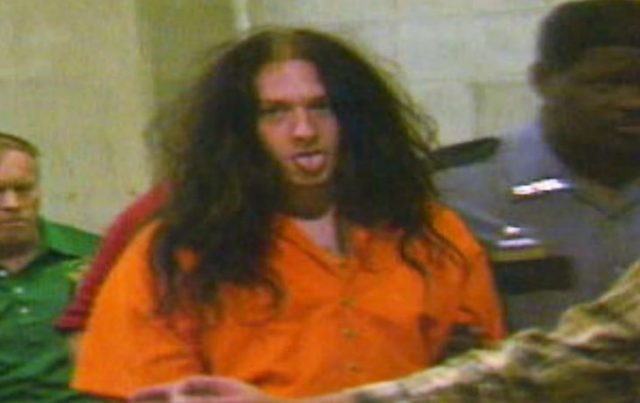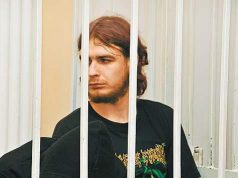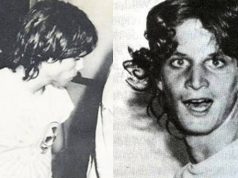
A murder, even the apparently most trivial, is always a circumstance, an event that can take unpredictable and inscrutable paths. In particular, occult and ritual crimes always put investigators to the test. Generally brutal, this type of crime contemplates themes, contents, motives and modus operandi that are completely characteristic and often unthinkable.
Freemasonry, esotericism, occultism, satanism, religious beliefs in the most disparate nuances and declinations. All this – and much more – contributes to delineate and outline the ritual murders.
True, presumed real, self-styled, hypothesized, effectively and incontrovertibly documented and proven. Often, in fact, it is not easy to establish the boundary between real occult and esoteric contents and para-occult and para-esoteric attitudes. Esotericism and para-esotericism, occultism and para-occultism, satanism and para-satanism.
Practices, knowledge and rituals used on numerous occasions as a simple screen, as a mere aggregator without, however, tangible and profound content – but full of superficial charm – for people who are often misfit, marginalized, without a place in society, manipulative or manipulated.
The story of Roderrick Justin “Rod” Ferrell represents the typical expression of family and social marginalization, as well as mental, cultural and psychological conditioning. A burnt and lost youth who, in order to affirm himself, takes refuge in the paranormal, in para-occultism, in para-esotericism, in para-satanism. And para-vampirism.
Rod Ferrell: the occult since childhood
Roderrick Justin “Rod” Ferrell was born on March 28, 1980 in Murray, a small town in Calloway County, Kentucky (United States of America). He is the son of a teenage couple: Sondra Joann Gibson and Rick Allan Ferrell, both seventeen years old. The two get married when Rod is just 9 days old. A marriage, however, destined to shipwreck: a few weeks later, Sondra and Rick divorce. Rod goes to live with his mother; at the same time, his father embarks on a military career. The last meeting between father and son took place when Rod was 8 years old.
Rod’s paternal grandmother, Betty Jean Ferrell, describes Sondra as a manipulative, angry woman, unable to look after her son. And a detail emerges: the father, Rick, is forced to abandon his son because he is unable to continue a relationship – though no longer amorous – with the complicated Sondra.
Rod, therefore, goes to live with his mother. Since Roderrick’s birth, his mother has lived with her parents, Rosetta and Harrell Gibson. It is in this phase that the first transfer from Kentucky to Florida, in the Winter Garden area (Orange County, Florida, USA) takes place. The first, in fact, will follow further movings from Florida to Kentucky, from Murray to Florida. These trips will become a nerve-wracking routine.
Rod’s childhood is marked by a controversial episode: he is the victim of sexual abuse by one of his two grandparents. Rod claims that it was his paternal grandfather, the latter, on the contrary, claims that the harasser is his maternal grandfather.
And it is in his youth that Rod approaches the occult, esotericism, the paranormal, the Fantasy genre. “Dungeons & Dragons” is an irresistible call for young Roderrick. His mother, who is also passionate about the occult and vampires, loses the righteous path: alcohol, drugs, prostitution, immoderate and unhealthy nightlife. An absent mother, a boy who, in the meantime, is getting dangerously closer and closer to hidden themes.
The two live at Southside Manor Apartments, Murray, Kentucky. We are still in the ’80s. Disadvantaged life, little money and many difficulties.
At the age of 10, Rod and Sondra went to Eustis, County Lake, Florida, at a house on Lemon Avenue. Here, they find their maternal grandparents. Rod first attended Eustis Middle School, then Eustis High School. But a new transfer is planned: in December 1995, he is back in Murray. In the meantime, Sondra remarries with the shady Darren Vraven in Daytona Beach. It is mid-1995.
Vampirism

Rod, who has now entered into an irreversible existential spiral, makes friends with three girls: Heather Wendorf (born in 1981, native of Eustis), Jeanine LeClair and Audrey Presson. And it is Sondra himself who accidentally discovers the dark side of his son Rod’s life. One day, when she enters Rod’s dark room, she discovers her son, Jeanine and another boy inflicting cuts on their arms. Blood is everywhere. A razor blade as a tool to perform an impromptu ritual of vampirism.
Other family matters disrupt Rod’s fragile life: other transfers (including that of his mother and stepfather in Michigan), his mother’s second divorce, a new school (Calloway County High School), the not easy life with his grandparents. Changes, changes, the total absence of positive and stable reference points.
And here Rod finds in Heather Wendorf that point of reference he never had before. Heather is a very particular punk girl: she says she is a demon, she is dedicated to vampirism – a ritual practice in which human blood is drunk -, she says she can get in touch with spirits. Rod, who has always been fascinated by these themes (also thanks to the influence of his mother), begins to emulate his friend: he starts to use heavy make up on his face, wears long black jackets, wanders at night in cemeteries, scars his arms so that others can drink his blood. Not only that: he says he is a 500-year-old vampire, named Vesago. Also significant, in this sense, is his friendship with the eighteen-year-old Stephen Murphy “Jaden”, also dedicated to vampirism and the occult.
Vampirism has entered in him. His stepfather, Darren Vraven, also plays a decisive negative role in Rod’s life: it is discovered, also thanks to Sondra’s testimonies, that Darren Vraven was dealing drugs, even to Rod. He also practiced cults and para-satanic rituals.
In school, in the meantime, Rod is at the centre of attention: his behaviour, now out of line and deplorable, is irrecoverable. He goes to school – until he leaves it -, abusing alcohol and drugs.
Other characters come into play – it is precisely the case to say… – in this crescendo of macabre and gloomy. Howard Scott Anderson (born December 18, 1979), a psychologically fragile boy who suffers the charm and charisma of Rod, and Dana Lynn Cooper (born April 8, 1977), an overweight girl, psychologically labile, lonely, who finds in the group of Rod reason for affirmation, acceptance and existential and social redemption.
Rod establishes a romantic relationship with Charity Lynn “Shea” Keesee, born September 12, 1980 in Murray, nicknamed “Sarah Remington”. Self-injuring, she too is now addicted to the culture of vampirism. The “Vampire Clan” is born. From the role-playing game “Vampire: The Masquerade” to real “vampire” rituals: sexual orgies, blood, self inflicted wounds for ritual purposes, torture and sacrifices of animals, the so-called “Vampire Hotel” (buildings in ruins at the Land Between the Lakes National Recreation Area, a large area located between Tennessee and Kentucky, straddling Lake Barkley and Kentucky Lake) to frame the shady activities of the “Vampire Clan”. “Me Killa”, “Please Deposit Dead Bodies Here” and “Follow Me to Death”: these are the inscriptions that stand on the walls of the abandoned structure and now home to the “Vampire Clan”.
The “Vampire Clan” suffers a shock when the friendship between Rod and Stephen Murphy “Jaden” is permanently and abruptly interrupted: Sondra, in fact, tries a sexual approach towards Stephen’s younger brother, 14 years old. Very explicit erotic letters. This is followed by a complaint of attempted sexual violence against a minor. The same Stephen who, previously, had already been removed from the Clan, accused of having betrayed the spirit of the group and the very rules of the sect.
The “Vampire Clan” get to the next level. Like in a role-playing game. The murders come.
The murders of Naomi Ruth Queen and Richard Wendorf

Eustis, Florida: November 25, 1996. Jennifer Wendorf, 17, makes a chilling discovery: her parents – Naomi Ruth Queen (54) and Richard Wendorf (49) – were killed at home, at 24135 Greentree Lane.
The scene is chilling. Richard, it seems, is surprised in his sleep. He had fallen asleep on the couch. His skull and ribcage were severely fractured by strong blows from a crowbar. Richard lies on the couch, on his back: his left hand just resting on his chest, his right arm stretched out to touch his waist and his jeans. On the chest, a “V” shaped burn, signed by the “Vampire Clan”. The burn was made with a cigarette.
Naomi, on the other hand, had just come out of the shower: she was still wearing her bathrobe. She tries to react by throwing hot coffee on her husband’s killers. In vain: the woman is killed with further, impetuous crowbar blows to her skull and face. The woman’s body now lies on the ground between the kitchen and the dining room, her face facing the floor, her hair soaked in blood. Wounds, cuts, bruises and burns on his hands and arms.
After taking the money and car keys out of the Wendorf’s house, the executioners go to the garage, then flee.
The murderers are Roderrick Justin “Rod” Ferrell and Howard Scott Anderson, members of the “Vampire Clan”. And what about the victims? Wendorf: a surname already encountered. Yes, they are the parents of Heather Wendorf, a friend of Rod’s and also a member of the Clan.
The murder of the Wendorf couple was carefully planned by Rod and the other members of the “Vampire Clan”. Heather had repeatedly confessed to Rod that she wanted to escape from her family, harmful and oppressive according to the girl.
At this point, the “Vampire Clan” begins a daring escape in an attempt to make them lose track and start that new life so coveted and desired in the name and sign of vampirism and demons. Two cars accompany the initial phase of the escape: the 1993 Ford Explorer of the Wendorf couple and a 1987 Buick Skyhawk, whose owners are the parents of Howard Scott Anderson. The latter was then abandoned.
The city of Sanford (County Seminole, Florida), the State Road 600 (or Connecticut Route 600), the city of Tallahassee (County Leon, Florida), finally Baton Rouge, Louisiana.
The group – composed of Rod, Howard, Charity Keesee (Rod’s girlfriend) and Dana Cooper – is being hunted down by the federal authorities. The escape, for now, seems to be successful. The young people, though breathing down their necks, do not give up their youthful passions: it seems they are heading to New Orleans, where there is a new amusement arcade. And they seem to want to meet Anne Rice, an American writer known for her novels about vampires.
Charity Keesee (two months pregnant: she will lose her child to miscarriage), however, makes a fatal mistake. She calls her grandmother in Wyoming and his mother in South Dakota: the group needs money and believes that Charity’s mother can contribute. She calls the police and tells to the boys – by deception – to go in a specific hotel. But the police are waiting for the clan. After 96 hours of flight, the “Vampire Clan” is in handcuffs. It was November 29, 1996. Baton Rouge marks the last stage of the Clan’s escape.
Extradition to Florida leads Clan members to the Lake County Detention Center.
The boys confess to the murders and describe the course of events. In particular, Rod’s bold and provocative attitude in favour of cameras and journalists is striking: kisses, grimaces, winks, smirks, penetrating glances, long and disheveled black hair framing a young face, but already unequivocally marked by years of tormented and disbanded life. A perennial challenge between Rod and the outside world.
Convictions
The classic prison routine is followed and flanked by the procedural and judicial process. The psychiatric appraisals, the accusations, the intense work of the defense attorneys, constantly looking for extenuating circumstances.
Heather Wendorf, in the meantime and despite the incessant requests of Sondra (Rod’s mother, who considers Heather guilty as well as her son), is cleared of all charges: she will definitively leave the investigation in January 1997 as she is deemed innocent and not involved in the murder of her parents. Rod and Howard, on the other hand, prepare for the trial.
It is February 1998. On the 23rd, the jury sentenced Rod Ferrell: murder in the first degree, he was sentenced to death. Electric chair. In addition to the charge of first-degree murder, there are other charges: burglary with an armed hand and armed robbery.
Howard Scott Anderson, in April 1998, was sentenced to two life sentences.
The position of Charity Keesee is also delicate. In August 1998, he was sentenced to 10 years and six months in prison. While detained at the Florida Correctional Institution, she is caught, along with another detainee, sucking blood into each other’s throats. She will be released on March 23, 2006.
The other girl from the “Vampire Clan”, Dana Cooper, was sentenced in July 1998 to 17 years and six months in prison. She will be released on October 25, 2011 (she was detained at the Gadsden Correctional Facility in Quincy, County Gadsden, Florida). Both, like Heather, will embrace new lives, new loves, children.
In November 2000, the Florida Supreme Court reduced the sentence to Rod Ferrell: life imprisonment. The revocation of the death penalty follows the decision, dated 1999, that the State of Florida cannot sentence to death murderers who committed the crime before the age of 17. In 1996, in fact, Rod was still 16 years old.
In the years following the sentences and until January 2013, Rod Ferrell’s and Howard Anderson’s lawyers tried several times to reopen the case in an attempt to turn life imprisonment into milder alternative sentences. Every attempt, however, falls into a vacuum. Rod Ferrell is currently being held at the Columbia Correctional Institution Annex (Lake City, Florida); Anderson is serving his sentence at the Calhoun Correctional Institution in Blountstown (Calhoun County, Florida).
The elements that go to compose and shape the events of the “Vampire Clan” are many. Elements, indeed, found in other stories. Social hardship, absent and devastated families, youth rebellion resulting in violence, desire and sense of social and existential redemption, generational clash between children and parents, the latter seen as an obstacle to the unbridled affirmation and rules of the former. But to aggregate such young people, we need an attractive glue, a reason for affirmation, success and action, an alternative pretext, unique, outside the box: vampirism.
A passion – for vampires and the occult – which, in the wrong hands, can result in criminal episodes. The “Vampire Clan”, like all phenomena, sects and horror-occult organizations, has extreme legitimate, culturally elevated and innocent passion for mythology and folklore that revolve around the noble and fascinating figure of the vampire, for role-playing and for the typical practices related to the legends “vampire” to make it an ideology, a way of life and thought. From a simple passion to an unhealthy existential outburst.
The double murder fits perfectly into this picture. Crimes aimed at “freeing” the young Heather from the weight of her cumbersome family. An obstacle to all the activity of the Clan, a supreme sacrifice useful for the completion of the “ritual” leap in quality of the Clan itself.
A double murder, however, that has nothing to do with ritual. Crimes that have nothing to do, concretely, with vampirism, with the occult, with the demons and spirits evoked by Heather Wendorf, with the rituals of blood, with the “doors of Hell” that Rod wanted to open, with the self-styled reincarnation of Rod himself in the vampire Vesago, nothing but a character invented by the leader of the “Vampire Clan” and that draws inspiration – probably – from the film “Hideaway”, a 1995 film directed by Brett Leonard in which a character named Vassago appears.
These crimes, therefore, are a mere and tragic expression and consequence of a venepheous but also widespread rebellion – in the most total marginalization and loss of contact with reality – social and psychological typical of young people. Rebellion that finds, in this determined juncture, in a phantom vampirism a seductive megaphone through which it can be manifested.
Cinema, role-playing games, vampirism and so-called vampires. The events of Roderrick Justin “Rod” Ferrell and the “Vampire Clan” resemble a film or literary screenplay.
A tragic role-playing game.















